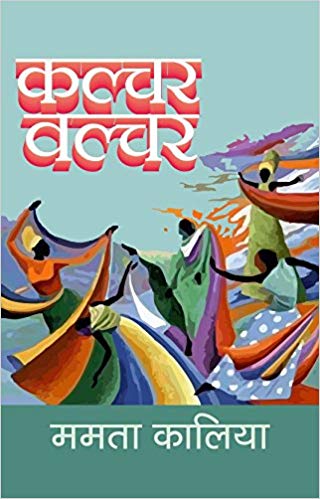Sushma Agrawal is beautiful, charming and rich. She dresses in subtly-hued saris of unique artisanal design and is the Minister of the Sahitya Sanskriti Bhavan (The Centre for Literature and Culture) in Kolkata. She is also the villain of Mamta Kaliya’s caustic 2018 Hindi novel Culture Vulture. It was originally released serially for the Hindi journal Hans, and its wandering, episodic construction reflects those origins. Characters come in and out of focus, episodes ebb and flow, and the author takes us wherever her imagination wanders. A lengthy and gripping interlude follows the sad tale of Uma, a hapless young woman who has been found standing on duty at the Bhavan library because the son of one of the founders had sent her over there to get a job. Uma has had an incomplete education, cut short by a shoddily arranged marriage to an irascible bank clerk. The unpleasant relationship takes a turn for the worse when she has a daughter. The ensuing tragedy is described in evocative and painstaking detail over many pages, finally bringing Uma to the doors of the Bhavan. But ultimately she is driven to the limit of her endurance by Sushma’s manipulative shenanigans, and unlike everyone else, she quits in disgust, never to be seen again. But Uma is not the protagonist of Culture Vulture.
The Hindi novel is not so wedded to the protagonist-driven plot as the English novel, and some of the most celebrated classics reflect this. Think Tamas, with its lack of a focal character, centring as it does around the illustration of abstractions: hate, violence, conspiracy, rumour. Or Raag Darbari, Shrilal Shukla’s epic refutation of the Gandhian idealization of village India. Raag Darbari does contain a pseudo-protagonist—Ranganath—who, as a visitor, is able to give us the outsider’s perspective on the corruption and malignancy that rule supreme in the village of Shivpal Ganj. In a way, Culture Vulture can be seen as an heir to Shukla’s bitingly sarcastic epic; here, too, there is a pseudo-protagonist, the author Navin Mishra, plucked by Sushma from unemployed obscurity to become the Director of the Bhavan. As an idealistic outsider, Navin is shocked and ultimately broken by the absolute moral rot at the core of the Bhavan. But he is too weak and ineffectual to combat it, let alone rise to the status of hero, or even just ordinary protagonist.
Most of this rot is the creation of Sushma herself: she cares little for the actual mission of the institute, the promotion of Hindi and Indian literature and culture, and much for her own power and outside reputation (but in society, not among the literary or the cultured). Sushma is an active leader constantly cooking up new directions for the Bhavan to expand, as well as astonishingly labour-intensive projects that serve no purpose whatsoever beyond breaking the will of the staff and establishing her own absolute power. The most symbolic of these is her decision that the statues of the two founders must be moved from outside of the building to grace the interior entrance of the library. This requires a senior staff member and his wife to move into the Bhavan apartment and oversee the work at night as she has decided that it would be too disruptive to daily functioning to have it done by day. Once the shift has occurred after immense effort, she chances to come by the library entrance one rainy day only to see that someone has hooked an umbrella over one of the statues. In a fury, she confronts all the library patrons and resolves to have the statues moved yet again.

